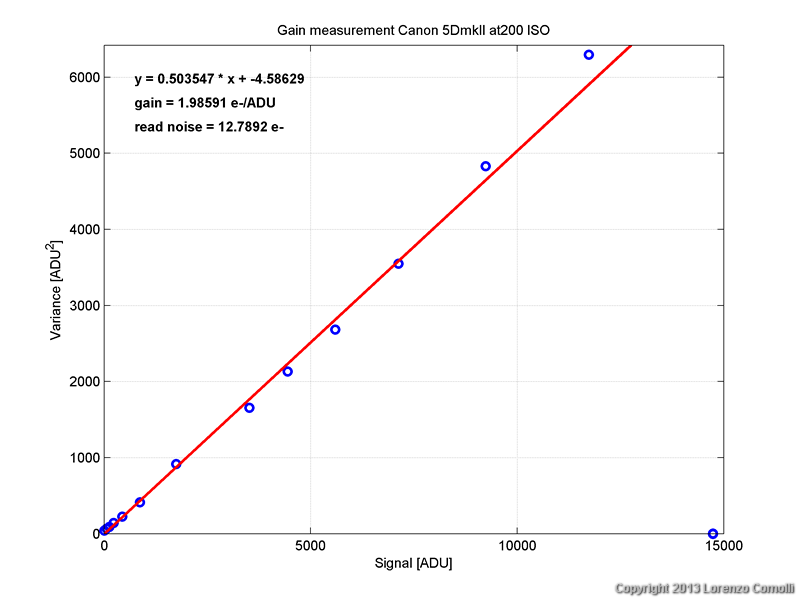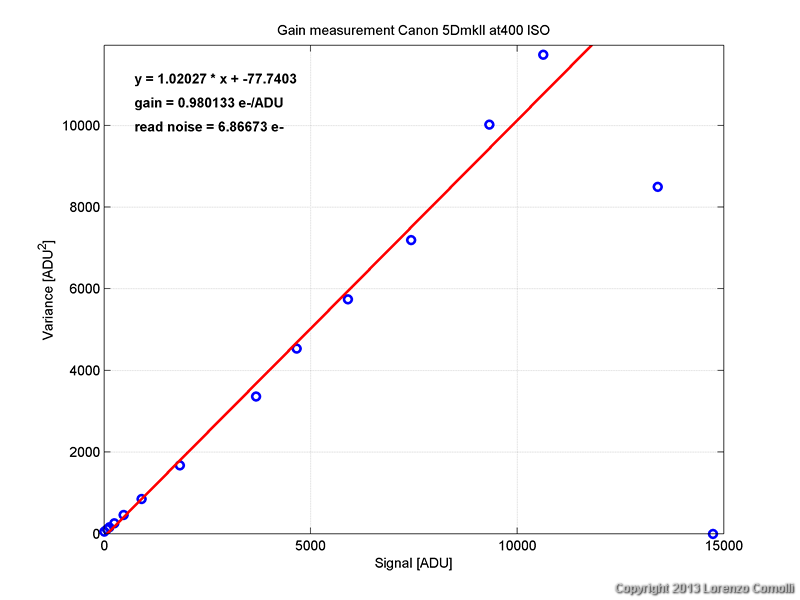|
by Lorenzo Comolli - Written in July 2013 - Thanks to Eros Paramento for taking all the test images! |

Introduction
In this page you'll find a technical test. Please refer here for an introduction, details and testing method.
Available sensitivities:
To distinguish between true and software interpolated sensitivities, the best method is to look at the histogram of a nearly uniform image (like a flat field). The result is shown in the figure below, and the conclusion is:
In this page you'll find a technical test. Please refer here for an introduction, details and testing method.
Available sensitivities:
- standard: from 100 to 6400 ISO with 1/3 EV steps
- extended: 50 and up to 25600 ISO
-
Gain. The measured gains
follow quite accurately the power law, except the 50 ISO, as expected. This extended
sensitivity is simply a 100 ISO. There is no effect in the RAW file, but
only in the JPG.
- Unity gain at 409 ISO
- Read noise. A
constant
decrease is found up to 1600 ISO. Using 3200 ISO or more produces no
improvements
on the read noise. So I advise not to use anything more than 1600 ISO,
the only effect of using more is to reduce the dynamic range. For
best results in low light circumstances mainly use 1600 ISO.
- Dynamic range. Considering
a full well capacity of 14600 ADU, the approximate dynamic range is
computed and reported both in the table and graph below. The best dynamic range
is curiously both at 100 ISO and also 200 ISO; but also 400 ISO has a very similar dynamic
range. Using 50 ISO does not improve in any way the dynamic range. Above 400 ISO the dynamic range start to decrease
noticeably. For best results on bright subjects, use 400 ISO or less.
To distinguish between true and software interpolated sensitivities, the best method is to look at the histogram of a nearly uniform image (like a flat field). The result is shown in the figure below, and the conclusion is:
- 6400 ISO, even if it is declared as a true sensitivity, shows a lot of voids. So in my opinion this is not a true sensitivity. The highest true sensitivity is 3200 ISO.
- 12800 ISO and 25600 ISO are not true, as expected.
- 1000 and 1250 ISO (intermediate stops): looking at the read noise
data, it seems that intermediate 1/3 step sensitivities are not
true: 1250 ISO has the same read noise of 800 ISO and 1000 ISO
even more! My advice is to avoid intermediate stop sensitivities! In the
histogram, some small voids are present in the 1250 ISO but strangely
no one is in the 1000 ISO.
- 100, 200, 400, 800, 1600, 3200 ISO are true.
| ISO | gain | read noise | Approx dynamic range |
| [e-/ADU] | [e-] | [dB] |
|
| 50 |
4.10443 |
26.5894 |
67.1 |
| 100 | 4.03861 |
26.1220 | 67.1 |
| 200 | 1.98591 |
12.4892 | 67.3 |
| 400 | 0.980133 |
6.86673 | 66.4 |
| 800 | 0.521405 |
4.34274 | 64.9 |
| 1000 | 0.427941 |
5.31895 | 61.4 |
| 1250 | 0.323833 |
4.06763 | 59.5 |
| 1600 | 0.267475 |
3.14913 | 61.9 |
| 3200 | 0.142652 |
3.30895 | 56.0 |
| 6400 | 0.072924 |
3.45170 | 50.2 |
| 12800 | 0.037206 |
3.43737 | 44.4 |
| 25600 |
0.018888 |
3.47768 |
38.4 |



Histograms

Details of measurements at each ISO setting











